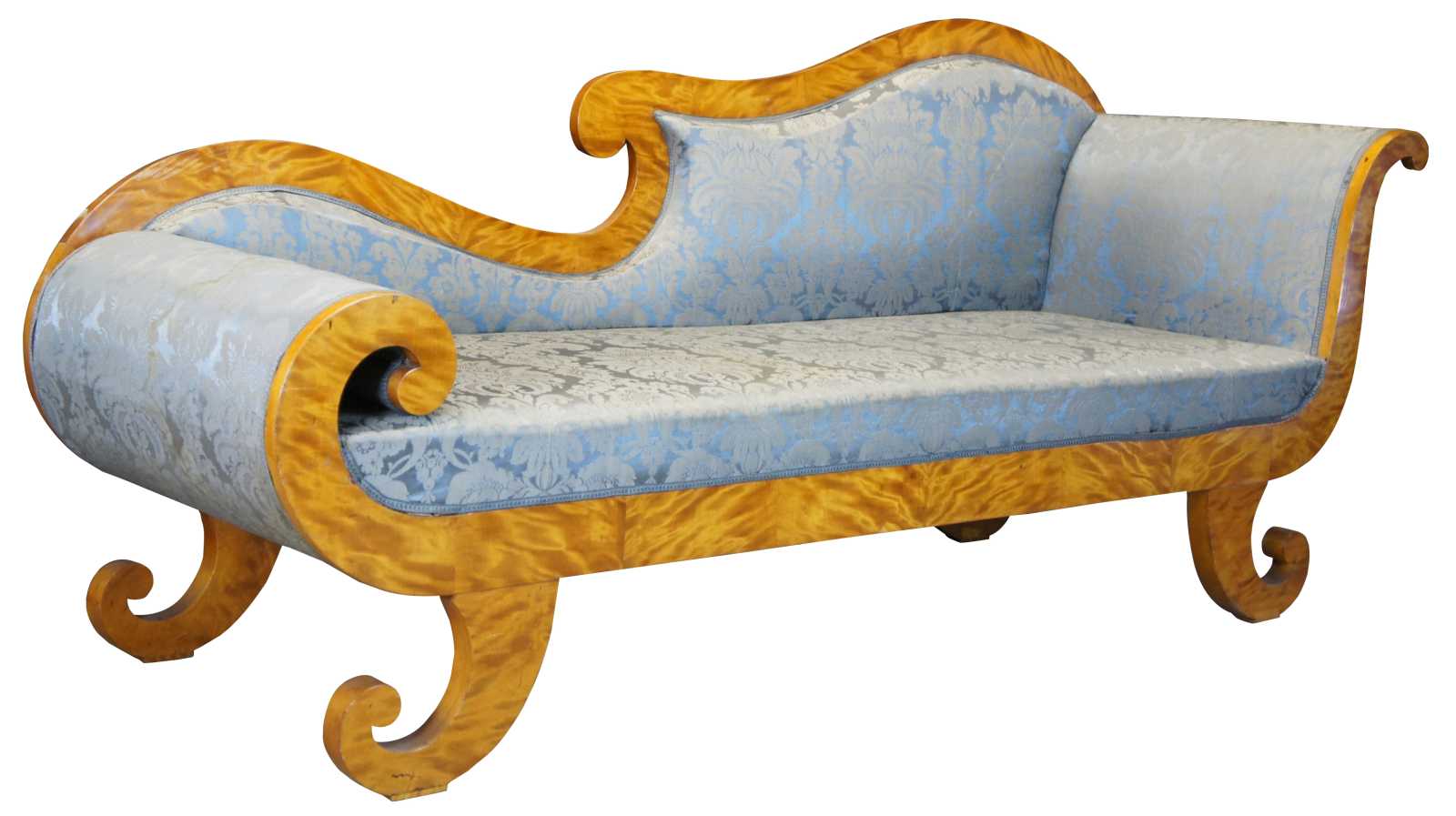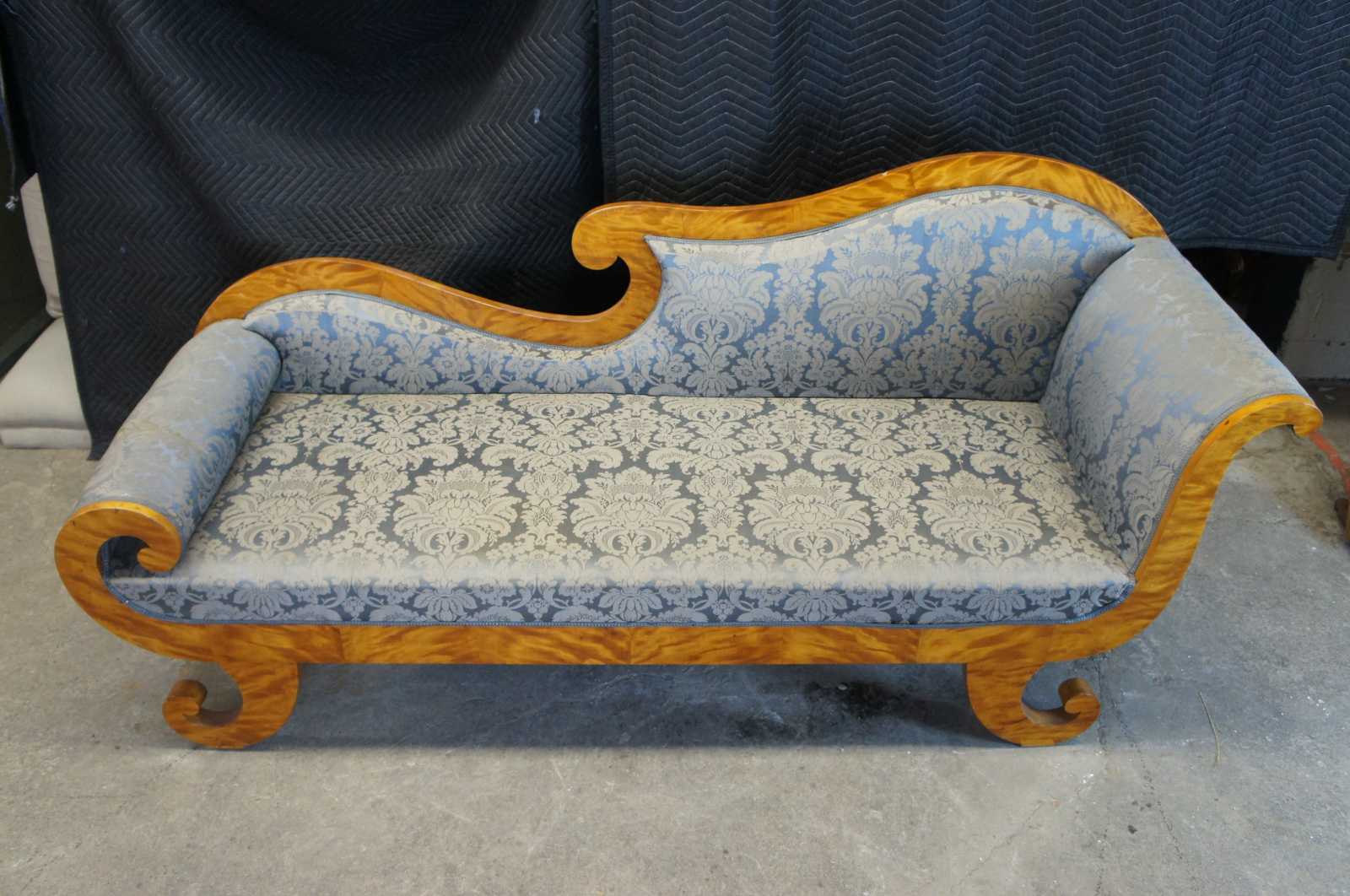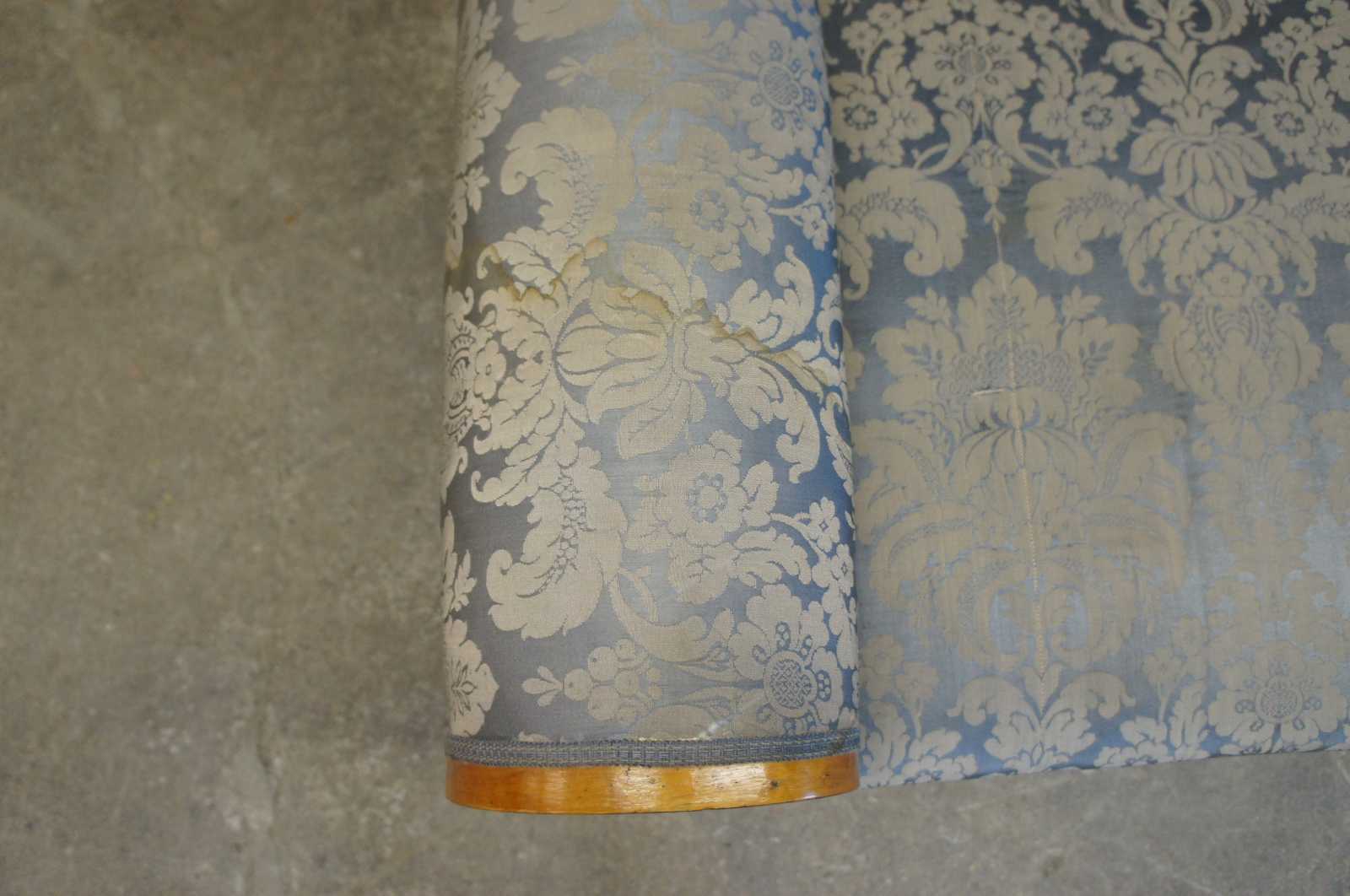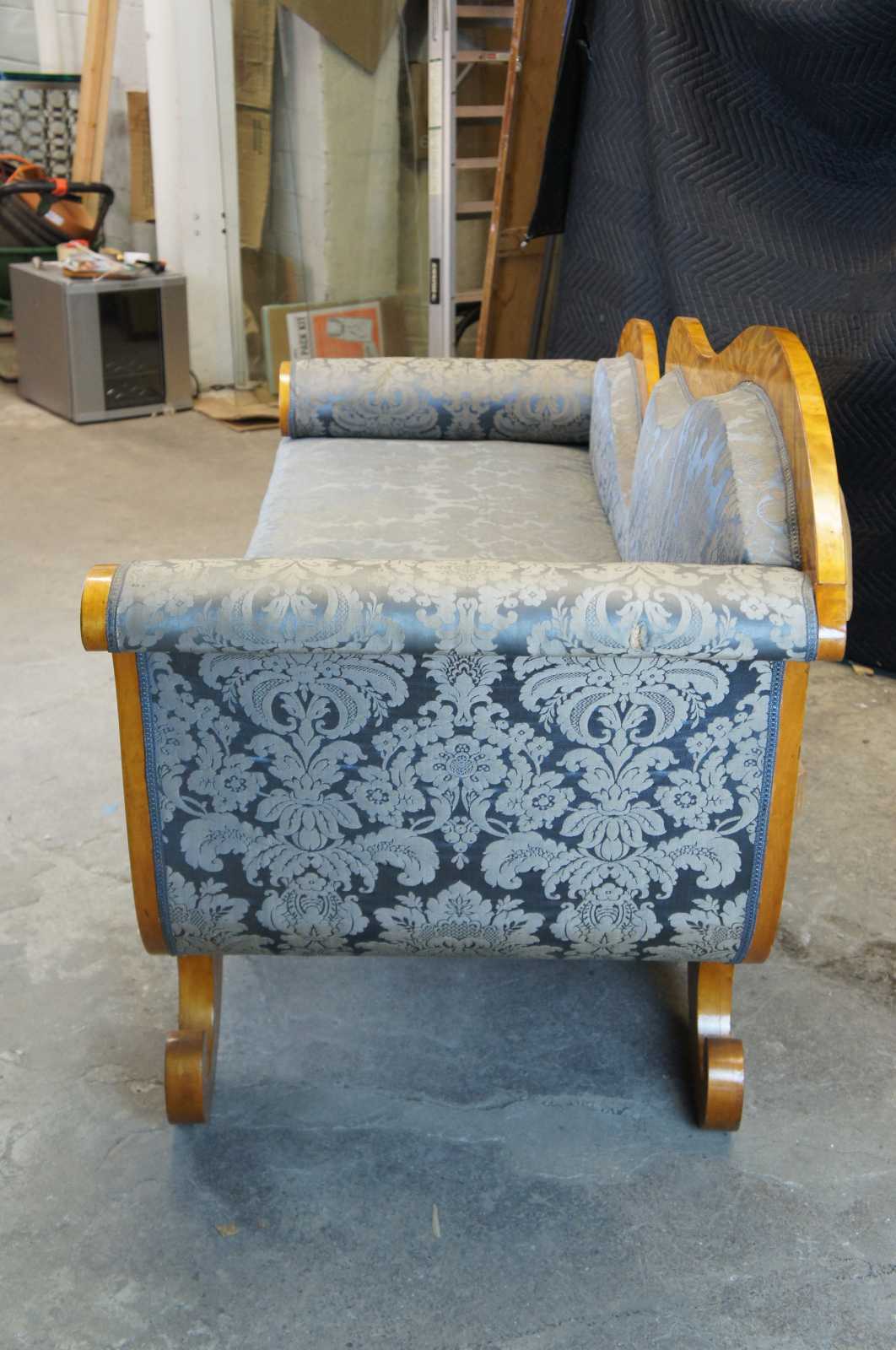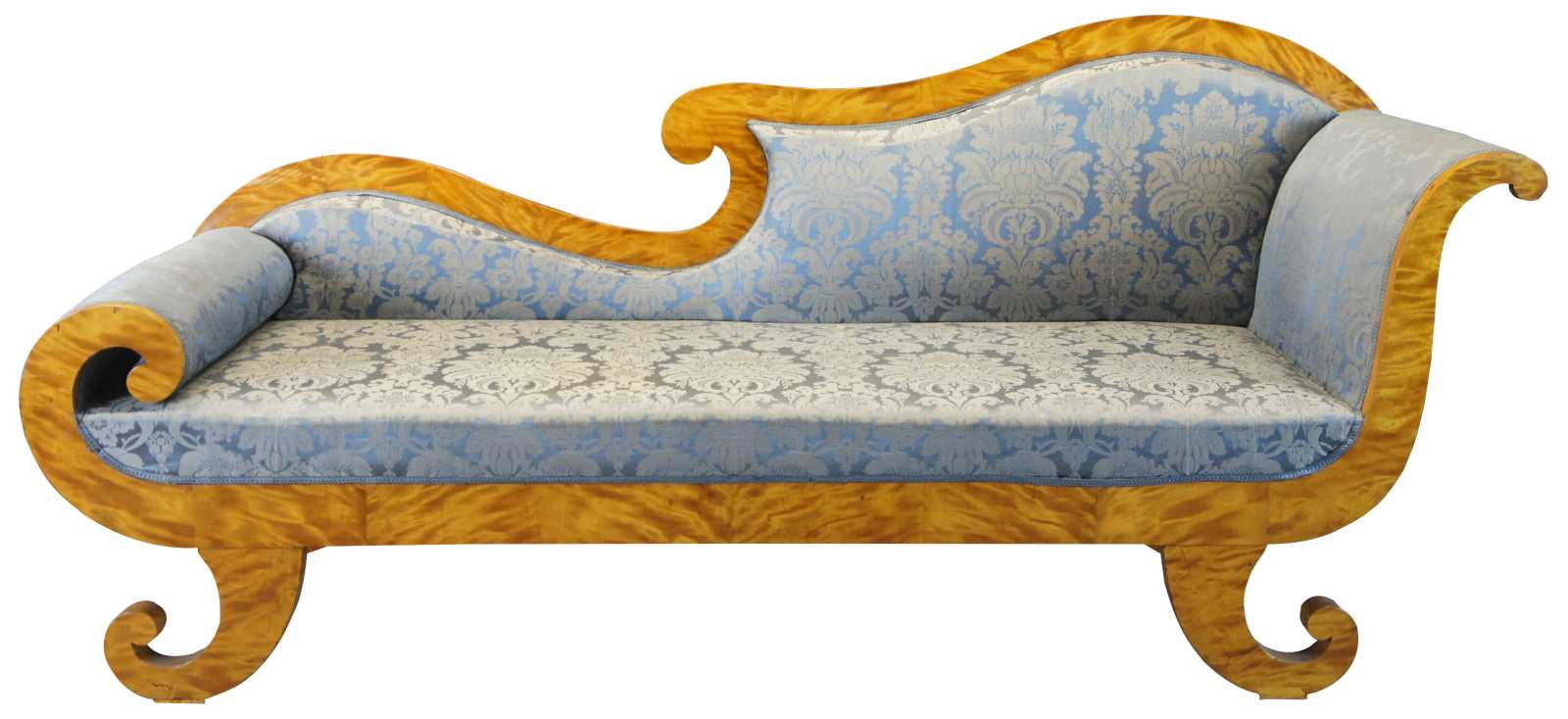
Antique Regency Satinwood Récamier Chase Lounge Sofa Fainting Couch Daybed 85"
Sold
Shipping:
Free Shipping Included
Delivery:
Estimated 2-15 Business Days
Payments:
Credit Card, Check, Cash, PayPal, Apple Pay, Venmo
Returns:
30 Days 100% Money Back Guarantee, Buyer Pays Return Shipping
Description
A rare and impressive Regency period Récamier sofa or fainting couch, circa 1820s. Exquisite and vibrant Satinwood sleigh form featuring a scroll crest rail, rolled and flared arms. Upholstered in an elegant blue French brocade. Supported by curvilinear scrolled legs with block feet. Acquired from a 1980s auction after a heated bidding exchange with Ralph Lauren.
The modern chaise longue was first popularized during the 16th century in France. They were created by French furniture craftsmen for the rich to rest without the need to retire to the bedroom. It was during the Rococo period that the chaise longue became the symbol of social status and only the rarest and most expensive materials were used in their construction. Today, the chaise longue is seen as a luxury item for the modern home. They are often used to complement a home's décor such as living or reading rooms, or as a stylish boudoir chair for bedroom seating.
Duchesse brisée (Broken duchess in French): this word is used when the chaise longue is divided in two parts: the chair and a long footstool, or two chairs with a stool in between them. The origin of the name is unknown.
Récamier: a récamier has two raised ends, and nothing on the long sides. It is sometimes associated with French Empire (neo-classical) style. It is named after French society hostess Madame Récamier (1777–1849), who posed elegantly on a couch of this kind for a portrait, painted in 1800 by Jacques-Louis David. The shape of the récamier is similar to a traditional lit bateau (boat bed) but made for the drawing room, not the bedroom.
Méridienne: a méridienne has a high head-rest, and a lower foot-rest, joined by a sloping piece. Whether or not they have anything at the foot end, méridiennes are asymmetrical day-beds. They were popular in the grand houses of France in the early 19th century. Its name is from its typical use: rest in the middle of the day, when the sun is near the meridian.
Condition
Good Antique Condition with some wear to the upholstery from use and age. Includes stain to front and outside edge of left arm, puncture to outside edge of right arm
Dimensions
28" x 85" x 38"h, arms 32"h and 24"h
